WTHBBQ! Chinese Buffet! by Chris S. '11
Spring 2008 courses, with a really bad analogy, haha. (super long post o___o)
Sooo. It all ended a few nights ago.
The all-nighter turned out to be a killer, since after the Physics test and some dinner, I ended up working for 13 hours straight, from 11 pm to noon the next day. Part of the reason why it took so long was because the orgo reactions on my 5.111 pset were literally quite impossible to do, with my limited orgo knowledge. But, through very valiant perseverance (and a lot of Youtube music playing in the background to keep from falling asleep), I completed my epic 15-paged chem pset and turned it in at noon. That said, and I did better than I expected on the physics test, so everything was worth it in the end. (thanks for all your well-wishing on the last entry too! you guys rawk. =D)
Whee – three more finals left and it’s the summer!
So – I took 4 courses and had my UROP for credit – so I’m not that hardcore but it still puts me at 60 credits, breaking the 57 freshmen credit cap and this was why I had to declare sophomore standing and yadda yadda yadda.
Fortunately, I’m pleased to report that after this semester, I will be completely done with GIRs! woot!
< graphic content >
Often (and my roommates have heard me use this analogy countless times), I feel like taking the Physics GIR is like being at a buffet with all-you-can-eat, but instead of being able to leave after you’re comfortably full, the food just keeps on coming and you’re forced to stuff more and more down your throat, until it’s like…uh, overflowing. But you’re not allowed to puke it out, since if you do, you have to start ALL over again.
< / graphic content >
Yes, i think that describes my abhorrence towards physics.
Keeping that in mind, enjoy the food!
8.02 – Physics: Electricity and Magnetism – 12 credits – GIR for Physics
It’s not an overstatement to say that this is the bane of my existence this semester. I know this shouldn’t really be an excuse, but I feel like the reason why I dislike physics so much is because I never had a teacher that really presented physics in a manner that was “exciting,” or so to speak. To me, physics is like a blob of equations and manipulations with forces that I can’t visualize, fields that I can’t perceive. When I left high school, I vowed to never take Physics again, but the MIT GIR requirement came back to haunt me – and I guess I’m stuck with it now.
Ai – that’s enough complaining, here are the more substantive stuff:
8.02, in many regards, is pretty much the same as 8.01 . Classes are taught TEAL-method (in classrooms with computers and the teacher lectures from a Powerpoint presentation), and there are online assignments, read: the notorious Mastering Physics (which you’ll love to hate, trust me ;D). As for the content, you start out from calculating electric/magnetic fields of simple particles, and then advancing on to calculating electric/magnetic fields – and finally applying everything to circuits with inductors, capacitors, and resisters. (Did you know?! Cool!).
I think what’s quite notable about 8.02 is that it’s the only class so far (with 8.01), that is graded strictly according to a certain percentage cutoff that is announced beforehand (much like high school, where 90 = A). Although most MIT courses aren’t “curved” per se, the scores are still “distributed” at the end, with a certain percentage of the class getting As, Bs, Cs (this percentage is often based on standard deviation – which is how you perform in relation to the rest of your class). Thus, if you have a lot of very intelligent people in your class, it might be difficult to get As in certain classes. However, in 8.02, you’re told from the very first day that if your overall average is above a 85, you will get an A for the course, and it’s viable that everyone can get an A in the class, if everyone gets above a 85 on the average (which isn’t technically viable, because then what the professor would do is to write harder exams, so it would be more difficult to get a high score).
What made 8.02 a memorable memory for me was the fact that there were a lot of cool demonstrations for the class (like the one where Snively was almost fried by 3000 volts – he blogged about it in one of his entries, but I can’t find it cuz he has too many! lol). Also, for my section (8.02 is taught across eight different sections with more or less 80 students in each, since there are like 650+ students taking 8.02 right now because of the GIR requirement), I had a professor that taught 8.02 because he loved it, not because he’s doing it as a job – and his enthusiasm really came across during the lectures. I think he was definitely the best physics teacher I ever had (though – not that I had many…I had one in high school, one for 8.01, and now 8.02).
I definitely felt like I learned a lot, although I don’t think my new knowledge of physics will ever entice me to major in Course 8 – I’ll leave it to my roommate, Zach. (he finishes the 8.02 psets in an hour each and completely loves the material (not to mention – OWNS every exam). Naturally, he declared Course 8 =p)
For me, 8.02 is like Zongzi – basically, Chinese rice balls with lots of yummy stuffing inside. Like 8.02, zongzi is great in small quantities, but due to all the glutenous rice – the more you eat, the more you start feeling blehh. (just like how I’m like on Physics OD right now, haha).
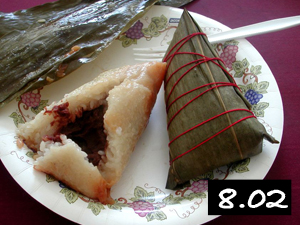
5.111 – Principles of Chemical Science – 12 credits – GIR for Chemistry
The chemical counterpart to 8.02, this was my other GIR. Unlike 8.02, however, I actually ended up enjoying this course a lot. Starting from basic chemical structure, we progressed through physical trends, acid-base, equilibrium, kinetics, redox, and finally orgo.
One thing about the chem and bio GIR is that, for some reason, most freshmen actually take Chemistry first during the first semester, and then take Bio during the second semester. Since I technically took these GIRs “out of order,” I had a very small chem class (there were only about 60? students and 3 recitations). I guess this was both a blessing and a curse, since I’m finally not in a massive classroom for the GIR – but the curve (or rather, the “grade distribution” – to be politically correct), is also worse since there’s a smaller sample size for exam results (and they tend to cluster at the top, since we have some very intelligent students).
5.111 is the chem GIR that’s recommended if you’re planning on doing a bio/chem related major, for reasons that I’m not entirely sure of (it covers more application stuff while maintaining a grip on theory?). Most freshmen actually take 3.091 (abbreviated as three-oh-nine-fun) during the fall semester. The class is known for a high pass rate and an amusing professor, and thus had commanded a very large audience (I believe this year’s fall 3.091 class was the largest class in history – part of the class had to watch the lectures in another lecture hall because they couldn’t all fit in one lecture hall).
Of course, like 8.012, there’s also a chemical equivalent for an more advanced class, if you’re really into chemistry – 5.112. Only offered in the fall, this course is a rigorous approach into the principles behind chemistry, and it’s generally recommended only if you have some pretty good chemistry background.
For me, 5.111 was like Kung Pao Chicken. See those chili peppers in the pictures? Although deceptively-innocent looking, consuming many of them in rapid succession can have very adverse effects (they’re dried chili peppers – so the resulting heat you get out of chewing them slowly in your mouth is much stronger than normal chili peppers). I have a pretty high heat tolerance, from growing up in Asia, but I’ve definitely had a few plates of “Chicken from Hell.”
5.111 is like Kung Pao Chicken because although the subject matters looks deceptively simple (for me, since I had a really good preparation in AP Chemistry), it gets pretty difficult rather quickly (this was at least 2-3x faster than my AP Chem course), and the biggest difficulty of the course is actually finishing the exams on time (since there’s a LOT of questions, and you’re only given an hour). In those hour exams, you basically have no time to go over your answers – so it’s like right is right, and wrong is wrong – there’s no time to check. For me, the “chili peppers” are also the notoriously long psets for 5.111 (that generally take me 6-7+ hours on average to complete).
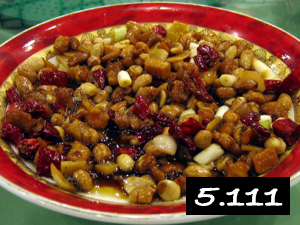
14.01 – Principles of Microeconomics – 12 credits – HASS Elective
So, I’ve always been fascinated with economics. I mean, it basically governs the way the business world works (just like physics govern the way science works). Economics wasn’t offered at my school, but I decided to take AP Microecon on my own, senior year, just for kicks. (I mean, the PR review book for economics was REALLY thin, right?) I ended up getting a 3 on the exam (yes, cramming for econ 2 days before the exam doesn’t work – and senioritis didn’t help either). To rid myself of my shame (jk), I decided to take the introductory economics course at MIT.
Actually, coming here, I didn’t know we had the best economics undergraduate program in the country (according to the Gourman Report), but I definitely had a feel for the popularity of Course XIV as I walked into the 14.01 lecture (which was brimming with students – undoubtedly many potential Course XIV majors). The unique thing about 14.01 is that you can either opt to take the “lecture-based” format of the course, or the other “recitation-based” option. In the lecture-based format, you go to lecture 2 days a week and recitation on Friday (which is pretty similar to most courses). In the recitation-based format, you completely go to recitation and do not attend any of the lectures (the TA gives you the lectures). Obviously, there are pros and cons to both options, but everyone manages to find the method that works for them. I opted for the lecture option, and enjoyed many of Professor Jeff Harris’ amusing lectures (he’s quite an interesting lecturer that loves putting himself as the center of his examples (among other things). Nearly all of his examples involve a guy named “Jeff” =p)
The interesting thing to note about 14.01 at MIT is that even though economics is definitely considered “science” at many other schools, 14.01 is a HASS class here, which means the credit you get from 14.01 gets grouped with all of the other writing/music/arts courses that you may be taking.
For me, 14.01 reminds me of Zhajiang Mian. Zhajiang Mian is a very popular noodle dish that’s eaten across Japan, Korea, China, and Taiwan. Consisting of regular noodles with a heavily-flavored dark soybean paste (fried with meat, scallions, and garlic for flavor), the zhajiang mian is eaten (at least in Taiwan) with a wide variety of toppings (often with cucumbers, eggs, bean sprouts, carrots, cabbage, and kimchi – just for starters). It’s almost the same as putting extra stuff (like guacamole, sour cream, cheese, lettuce, salsa..etc.) on American burritos, if you prefer to imagine it that way. In fact, the Taiwanese version often get so colorful that it’s called “five-colored noodles” (because of all the varied colors of the toppings – sorry I can’t find a public domain pic that I can post).
In very much the same way as the varied toppings, 14.01 is an introductory course to the many multi-facets of microeconomics. Starting out from the basics of supply and demand, you quickly progress to indifference curves, isoquants, risk behavior, taxes, tariffs, subsidies, price ceilings, equilibrium, efficiency, game theory, oligopoly, monopoly, monopsony (the opposite of monopoly!)…and so on. It’s a nice hodgepodge introduction to a ton of stuff in microecon, and I definitely had fun sampling all the different flavors and watching it come together :)
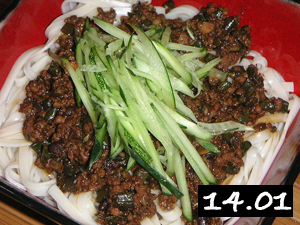
21F.703 – Spanish 3 – 12 credits – HASS-D (Language Option)
One of my biggest interests in my life is learning languages. Probably living in a country that’s already bilingual (Chinese, Taiwanese (Min Nan)) and potentially quad-lingual (English and Japanese are very popular in Taiwan) shaped my love for language. Since high school, I’ve taken Spanish, although I never really could speak it until I took 21F.782 (Spanish 2 in Madrid) and got to go to Spain during IAP!.
Taught by the same professor that I went to Spain with, Spanish 3 is a class that’s very geared towards communication (generally listening/speaking – but there’s also a fair bit of reading). I’m happy to say that I can finally read Marquez (or, at least, some of it, haha). Most of the course was focused on interactive exercises in class where you had to speak a lot, but we also had some pretty cool things going on, such as a live web-chat with a class at the Polytechnic Institute of Valencia (which I visited when I was in Spain! woo!).
If you take a language course that’s higher than Level 3 at MIT, you can actually get HASS-D credit for it (HASS-D essentially means HASS Distribution – you have to take 3 HASS classes in different disciplines of humanities in order to graduate). The other unique thing about language courses is that they tend to meet four days a week, and since it’s based so much on participation, absences will count a lot against your grade (for example, if you miss more than 4 Spanish 3 sessions, you get an automatic F in the course). My class is at 11 in the morning and it’s my first class of the day – suffice it to say that because of Spanish, I haven’t skipped a single lecture on Mondays to Thursdays because of oversleeping this entire semester (Fridays may be a different story…XP).
I’m planning to take both Spanish IV and Japanese III at MIT next year, so I guess there’ll be a lot of languages going for me! I heart<3 (not like physics, ahem ahem).
Well, since this is Spanish, we should have a Spanish dish, right? But ahh – you’re in a Chinese buffet, remember?
Arroz con Pollo is my dish of choice for 21F.703. Being a very common dish in Spain (almost like how pizza is like here), you see arroz con pollo nearly everywhere you go in Spain (in fact, some of the hosts for my Spanish program were fond of only cooking arroz con pollo for their host students). Flavorful in both the saffron rice and the chicken (usually seasoned and diced, rather than presented whole), arroz con pollo reflects the Spanish culture of vivacity and energy.
In Taiwan, we have pretty much the same thing too – chicken and rice – except the chicken is simmered in soy sauce until the meat is tender and juicy and placed over white rice with a variety of other condiments. It’s popularly sold as a bento box for train travelers during the 50’s to the 90’s – but it is also a very common dish in Taiwan that mothers make for their children.
(the point is to see that there’s chicken over rice, lol)
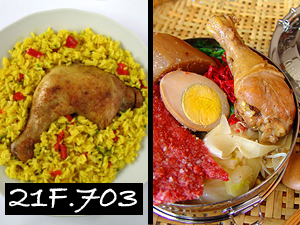
7.URG – Course 7 Undergraduate Research (Graded) – 12 credits – General Elective
At MIT, you have three options to choose from when you’re doing an UROP. You can either do the UROP for pay, for volunteer, or for credit. A lot of people start their UROPs as a volunteer, since they want to convey to their UROP supervisors their passion for their research (so much that they wouldn’t mind doing it without pay). Doing an UROP as an volunteer is also a good option if you aren’t sure whether you want to commit to the UROP long-term. Sometimes, you might be forced to do an UROP for volunteer as well, since your project might not be ready to fund you or you have a credit cap so you can’t append extra credits onto your schedule.
However, the majority of the people either do UROP for credit or for pay. If you do an UROP for pay, you are either funded by 1) your lab, 2) some external organization, or 3) the UROP Office (often in the form of scientific research grants to MIT). From my personal experiences, I’ve realized UROP supervisors are generally more hesitant to take on freshmen UROP students for pay (generally I think because of lack of experience and uncertainty in long-term commitment). However, doing an UROP for pay is generally the better option when you’re doing an UROP at MIT over the summer (which I would be doing), since if you opt to obtain credit for your UROP during the summer, you actually have to pay summer tuition (which costs an oodle of money) to MIT. If you apply for funding from the UROP office, you get paid at the base rate of $9 per hour – but hey, it’s great getting paid while you’re increasing your lab experience and scientific knowledge at the same time!
Finally, doing an UROP for credit is a very popular option during the school year. You register credits with the Registrar’s Office (generally 9 or 12), and you have two options to choose from – X.UR, or X.URG (X being the course number you’re doing the UROP in). X.UR means you get the credit for doing the UROP, but you don’t actually get assigned a letter grade for the research (it’s on pass/fail). In X.URG, you actually get assigned a letter grade by your research supervisor for the quality and effort you put into your research. Personally, I don’t feel like getting credit is the most important thing for an UROP, but it’s great to be getting “compensated” for all the hours you spend in the lab. :)
For me, my UROP is like Almond Tofu, my favorite dessert by far in Chinese cooking. Made from almond extract and gelatin, almond tofu (jelly) is like the Asian equivalent of Jello that’s super fragrant (and not artificially colored! Jell-O coloring freaks me out). It’s often eaten with fruit cocktail (that isn’t present in the picture), and despite the name (which is a direct translation from Chinese) – doesn’t contain any soybeans.
My UROP is like Almond Jelly for me because I often head over to the lab after my classes, just like the dish is often eaten as a dessert. Although some of the lab work can get cumbersome and confusing, I feel like the times when I’m pouring the petri-dishes, cultivating bacteria, setting up an RNAi screen, playing around with the microscopic worms, or raising worms are excellent times to think about how everything in biology ties together and how everything starts to “make sense” after you really do work in the lab. The feeling of having finally figured out how a MAP kinase pathway works in the lab, for example, is a nice, refreshing feeling. It means so much more than reading a bunch of diagrams in a 7.012 textbook =p.
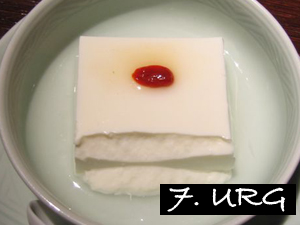
Buen provecho!
8.022 (no TEAL, great instructors) ftw
Any good Chinese food places or Asian grocery stores near MIT?
Recommendations?
plenty of chinese food places in boston — chinatown is a good start. not too far by T from campus, and pretty convenient for boston east fraternities. asian grocery store (Super 88) is a bit farther away on the west side of boston, but accessible by boston west saferide.
the one thing that is hard to find around here is tapioca/boba/bubble tea — the student center has a place that sells it on the side (not great), the chain store in the area, Boston Tea Stop, is in Harvard Square. the only place to get good pearl milk tea is super 88.
@ Yuzhi,
MIT is close to the public transportation, the subway or as Bostoners like to abreviate the “T” and you can get access to Chinatown to get authentic Asian food
or
you can head to Central Square which is on Mass Ave pass Random Hall
or
you can head over to Harvard Square (also a T ride away)
or
you can head into Boston (walk across the Smoot bridge)
thanks guys!
it’s weird. on the west coast it is super 99 instead of super 88 haha!
There’s a decent amount of Chinese food in Boston. Like what people said, Chinatown and Super 88 (it has a pretty good Asian food court) are good starters. There’s also a couple decent take-out places right next to MIT if you don’t want to venture too far. If you expand your definition of “Chinese food” to include Thailand, Indian, and Vietnamese food, then your options near MIT just exploded as well. In short, you probably don’t have to worry about not having Asian food
And yes, I agree. It’s hard finding a tapioca/boba place that’s consistently good. That, and I die a little on the inside when I have to plunk down $3+ for a cup. (they cost like 70 cents in Taiwan!) I also know some of my classmates from Taiwan just make it themselves when they’re in the States, so I guess I need to learn that
But otherwise, other than just Boston, you can check out NYC (4 hours by bus) or Toronto (2 hours by plane) if you’re really adventurous (NYC will probably be your more frequent option). The Chinese food in those two cities are absolutely amazing.
First!!!!
Wait? Are memristors going to be on the 8.02 final? I thought RLC were enough!
Just kidding!
you didn’t absolutely have to declare sophomore standing though (if you still want a/b/c/no record or are too lazy) i just did my 7.urg for 9 units instead of 12
I sent that article to my 8.022 prof a few weeks ago!
Another random point about 8.022: like 8.02, it is also graded on an absolute scale (the “A” cutoff is 85). I’ll save more thoughts on that for a later entry, though.
I WANT THAT FOOD!!!!!!!
Great entry Chris, you really put a delicious twist on those GIRs. I feel the exact same way about biology as you do about physics (I vowed to never take it after the tenth grade!!!) so I guess I better start stocking up on some Zongzi, get used to the taste…
@ Chris – awww… no comparison to Ramen? Well, I guess Zhajiang Mian is close enough…. mmmmm… food… now I’m hungry
Well, I guess Zhajiang Mian is close enough…. mmmmm… food… now I’m hungry
Lalala – yeah, but 7.URG came as an afterthought. I was actually taking 18.03 up to the fifth or sixth week, until I decided 72 units was just too difficult.
food AND physics (I’ll just pretend you didn’t blatantly insult physics
(I’ll just pretend you didn’t blatantly insult physics  )
)
Then again I feel that way about bio. Haven’t done any in two years because at my school you take either bio or econ as the sixth subject…
Is it possible to take macro and micro econ during the same semester?
oh and you guys will blog over the summer right?
Great post btw, its just what was needed. I was a little lost as far as the GIRs were concerned.
One more thing, memristors ftw!
I read that a couple of days ago.
Its AMAZING.
This entry is making me so hungry right now. Except my cooking skills aren’t good enough to make any of the above =(. *settles for ramen*
@ Aditi –
Haiya, sorry, but I just dislike physics too much. =( And yup, you can take 14.01 and 14.02 at the same time (although I don’t think many people except hardcore Course 14s do it, because you probably will want to start taking classes in your major). I’ll blog over the summer, if there’s something relevant that you should know about
@ Yiwen –
I’ll cook for you, haha. =p One of the biggest things learned after coming to MIT – cooking for myself. I actually know how to make most of the stuff (save the zongzi – too much work, and kung pao chicken – I don’t have a wok) up there now
I love Almond Tofu! ^^ My aunt makes it for me whenever I visit her and her family. We normally have lychee, lychee juice, coconut, and cherries with it.
I’m will miss the everyday Chinese food my parents make for me at home. I’m so accustomed to it that I think I’ll die from eating teriyaki and fried rice at MIT for the next 4 years. That’s why I’m going to learn how to cook more Chinese food (or hopefully find people in my dorm who can cook well).
The way u presented the whole blog-food analogy was really cool. It made me remember the Aunt Linda movie reviews that came out in the Weekend Updated in SNL. the way she would give movies an “oh boy” and “ghaa!”. (physics) LOL.
“I think what’s quite notable about 8.02 is that it’s the only class so far (with 8.01), that is graded strictly according to a certain percentage cutoff that is announced beforehand (much like high school, where 90 = A).”
18.014 and 18.024 are such classes too! :D
I want to double major in phy and econ. I guess I’ll do micro econ first
Do you know anyone who’s done the F/ASIP program?
And whoa you can cook! iHouse must be quite the place food-wise ^^
Hey, thanks. I love Almond Tofu as well. Try out some recipes at http://www.wokfusion.com. I got a few recipes and they’re great.
Chris, I thought you are Taiwanese? Why not “Taiwanese” food but “Chinese” food? Don’t you love your country?
@Albert:
oh,man!Taiwan is one part of china!You Americans must have misunderstanding about Taiwan
As a matter of fact,I am a student from Fujian province,the place closest to Taiwan in mainland
china.Although Taiwan is not reigned by chinese
goverment now,maybe they should’t be,but it is
belong to china,it can’t be changed,because the
culture in Taiwan is actually the reflation of Chinese culture!Every people in China loves Taiwan,we can’t permit Taiwan seperate from
China,just like you Americans can’t permit Alaska
seperate from the united states.
Are UROP’s required? Or do a lot of MIT students choose to do them?
@ Aditi – Quite a number of frosh do FASIP, although most drop out after the first sem. I didn’t do it personally myself, so I can’t give you first-hand info…
@ Albert + Jack: I have my own political views; but please don’t discuss politics on the blogs – this is not what they’re for.
@ Jeremy – UROPs aren’t required, per se, but 80%+ of MIT students do them, cuz that’s what MIT is famous for!